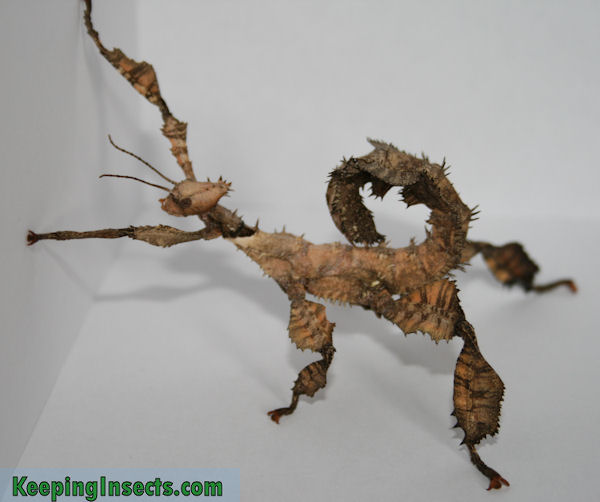I received this readers question in my inbox this week. I thought to share it with you, as I get many questions on the same subject.
Hello Linda,
Not too long ago my girlfriend and I acquired two giant prickly stick insects, and using your information on the web we’ve been watching them grow with keen interest and joy. They have finished their final molt and we’ve been keeping an eye out for eggs, however since their last molt they have not eaten (save once, and very little at that) regardless of the leaves. My question being is this a sign of something wrong or do they recoup for a bit longer before eating after the final molt (usually they get hungry post molt after about a day or two, it is now approaching four days.)?
We haven’t seen any eggs dropped, but they are still little poop machines, not nearly as much before but only slightly less in that department, so I’m unsure what is going on as I can tell from the leaves they are not eating.
Thank you for your time,
Bryon Janich
Oregon, USA
I’m happy to tell that there is no need to worry about the health of these two stick insects. It is normal for stick insects to stop eating just before and just after shedding their skin. Sometimes that takes just one day, sometimes a bit more. It should not take more than around 5 days. A stick insect can live without food for some time, especially if they are older and bigger and thus have more reserves.
As the stick insects of Bryon still poop, they still have some food to digest so it’s even less crucial for them to eat. It’s important to keep the food available and keep the air humidity at high enough level. Spraying some extra water droplets more often will allow them to drink more, as when fasting they are not taking in any moisture from their food.
The eggs will not be produced until around 4 weeks after the final molt. With the giant prickly stick insect the eggs are very easily distinguished from the poop. The eggs cannot be missed. It’s just waiting now for them to be produced!

